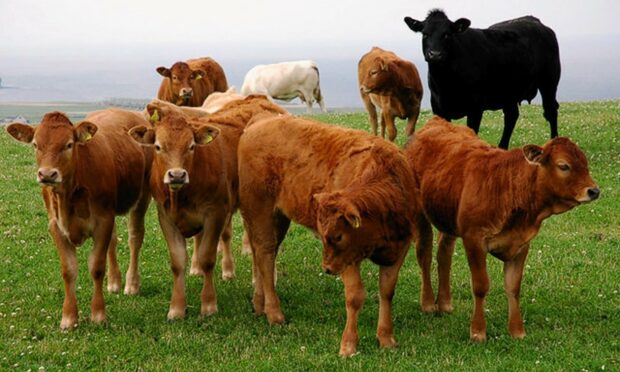A Scottish study has found beef farmers could reap an investment of more than £120 per cow by using artificial insemination (AI) instead of natural service.
Livestock Health Scotland and animal health company Zoetis found that AI resulted in increased pregnancy rates, calf weights and reduced mortality.
The organisations looked at the value of using AI and synchronising breeding using CIDRS on three spring-calving beef herds in Caithness, the Borders and Dumfriesshire.
Over 300 animals were bred between June and late July 2021 by synchronisation and timed AI followed by a sweeper bull or by using a normal stock bull.
The results found:
· Conception rate to AI averaged 59% and overall pregnancy rates were superior in the AI group across all three farms, ranging from 94% to 100% compared to 82-97% in the natural service group.
· Assisted calving and calf mortality were higher in the natural service group, with calf mortality from birth to weaning ranging from 5-10%, with only one herd reporting mortality in the AI group at 2%.
· On average 78% of cows calved in the first three weeks when bred to AI, compared to only 44% in the control groups.
· Calves born to AI groups were, on average, 24.5kg heavier than calves born to the control groups.
Caithness farmer Donald Henderson from Dunn Farm, Wick, was one of the farmers involved in the study.
He had previously AI’d some of his heifers using an easy calving bull and to tighten the calving block.
Mr Henderson continues to use it to maintain a tight calving period in his heifers and across 60-70 of his best cows in his 230-cow Simmental, Salers and Aberdeen-Angus cross suckler herd.
He said: “We had similar results this year to last year and you only need to save one or two calves from dying for it to pay for itself.
“In the study, our calves weaned 30kg heavier than those to natural service due to the extra growth and superior genetics. We are calving outside, and having batches of cows and calves means we can manage grass better.
“Breeding in this way means we also have uniform batches of bulls and fat cattle, which we can sell off the farm at a year old. Because they are in batches of a similar age, there are also fewer health problems as you are not mixing calves of different ages.
“The fact we are selecting superior genetics and producing more milky cows is certainly aiding growth rates.
“It’s also peace of mind when you AI, as we know about 60% of the animals will be in calf immediately with one shot of semen.”
However, Mr Henderson says good handling facilities are necessary for anyone taking this route.
“There’s more to using CIDRs and Ai’ing than sticking a bull in the field. We have self-locking yokes in four fields around the shed, meaning we can AI quite easily and keep cows as stress-free as possible post-insemination, which is a must,” he added.
Mr Henderson also says condensing the calving period to a six-week block means he can organise labour more effectively.
Commenting on the results, Veterinary Consultant Colin Penny from Zoetis said breeding using AI is vastly underutilised in the beef herd, yet the economic gains can be quite significant.
